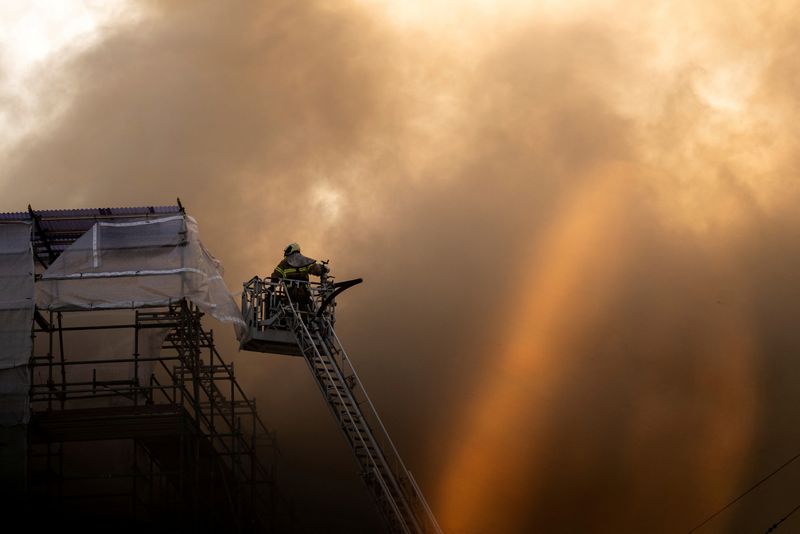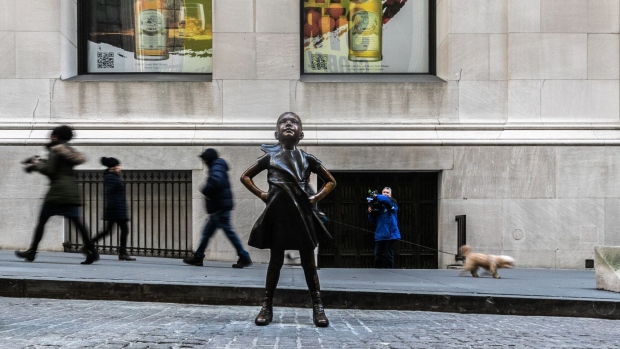Published 30/04/2024,

: A firefighter works after a fire broke out at the Old Stock Exchange, Boersen, in Copenhagen, Denmark April 16, 2024.
By Lucien Libert and Isabelle Yr Carlsson
PARIS/COPENHAGEN (Reuters) - Restoring Copenhagen's Old Stock Exchange, a local landmark that partly burned down earlier this month, needs to be done step-by-step, resisting the emotional impulse to rebuild quickly, an expert involved in the restoration of Notre-Dame-de-Paris said.
Two weeks ago to the day, a blaze toppled the spire of the old exchange, causing large parts of its roof and later its walls to collapse. The scene was reminiscent of the fire that engulfed the French cathedral in 2019.
"It is important not to rush. There are a thousand problems to fix and the temptation is to go very fast," said Antoine-Marie Preaut, an official from the French Ministry of Culture, who was one of the first people to enter Notre-Dame after the blaze and has been closely involved in its restoration since.
"The will to rebuild is a response to the emotion created by the fire. But is it possible to rebuild? Can the structure support the spire again? At what cost and under which approach? The experts will help answer," he told Reuters.
"One needs instead to assemble a team across fields, to have the most comprehensive view possible."
The lord mayor of Copenhagen, Sophie Haestorp Andersen, will visit Paris this weekend for a climate change meeting but will discuss the fire while there.
She told Reuters she is hoping to learn from French experts how to prevent other historical buildings from damage by fire.
She said the Mayor of Paris had also invited Danish officials for a Paris visit, at a later stage, to study what can be relevant from the Notre-Dame fire.
The restoration of the French cathedral is nearing completion and the re-opening is scheduled for December.
Preaut said Danish authorities will need to secure their site and allow investigators to find out the cause of the fire, which is unknown. However, both fires started during renovation work.
"Fires can happen more frequently during renovations. More people come on a site, increasing the risk of something going wrong," said Preaut.
Finding the funds for restoration will also be key, said Preaut, given the works will cost more than before the fire.
To restore Notre-Dame, France raised 850 million euros ($911.29 million) in donations from the general public, France's richest businessmen and public financing.
"We don't know how much the Stock Exchange's restoration will cost. "We hope they can get some private financing ... this will be long and costly," said Preaut.
The images of the Danish fire were eerily reminiscent of the fire at Notre-Dame, Preaut recalled.
"It was troubling to see how similar the situations were: the pictures from April 16, when we saw the Copenhagen stock exchange on fire, it immediately looked like it was April 15, 2019 when Notre-Dame-de-Paris burnt," Preaut said.
($1 = 0.9327 euros)










.jpg)
